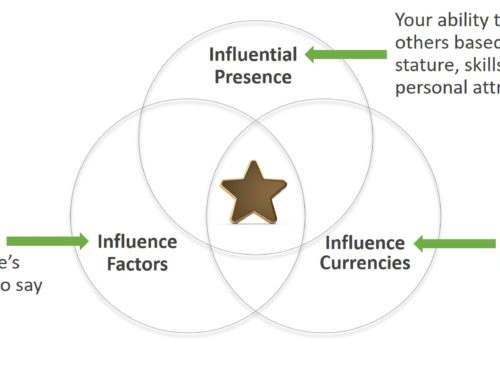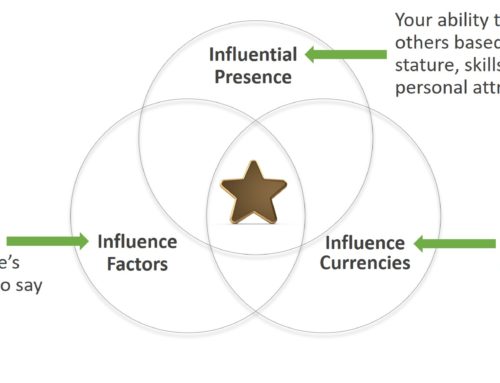When a business users, or someone with IT itself, creates a barrier that blocks your way, such as refusing to sign a needed document, not responding to an important email, or not attending a long-scheduled meeting, it’s natural to sit back and ask yourself one of the following questions:
- What am I doing wrong?
- Why doesn’t this person like me?
- What does this person have against me?
- Why does this person dislike IT?
1. People Are Not Against You; They Are for Themselves
This is a key concept. It is important because it refocuses your attention to the other person, not yourself. If you understand why the other person believes what you are doing is not in their best interest, you can change your strategy or find another way to explain what you want to accomplish. For example, if you are trying to implement new sales management software, you can explain it to the salespeople in one of two ways:
- “This new sales management software will make you so efficient, we’ll be able to raise your annual sales quotas.”
- “This new sales management software will increase your efficiency, allowing you to sell more products and increase your sales commission.”
As you may expect, the salespeople will definitely dislike the first statement, but really like the second one.
Truly understanding your audience is key to influencing them.
2. By Definition, Influence Facilitates Change
Continuing on the theme that it is about understanding your audience, you must understand what it is about the way you are trying to influence your business partners that is causing them to resist. This resistance may be caused by one of the following factors:
- Organizational Culture: Your request is going against the grain of the organization’s culture, goals, or direction.
- Individual philosophy: The person may have a different attitude toward the issue or think it should be solved in a different way.
- General stagnation: The person or organization may be stuck in their current way of doing things and not want to change, even if the change is in their best interest.
- Perceived loss: The person believes assisting in your initiative is in some way detrimental financially, politically, or otherwise.
- Political infighting: The people in your department do not get along with people in the other person’s department. Organizational silos of this type are very detrimental to the overall organization and can stop your project dead in its tracks.
- Lack of interest: The person you are trying to influence has no vested interest in helping you, does not believe in your cause, or has no motivation to help you.
- Disagreement with task or direction: If the person understands what you are trying to do and does not like your direction, not only can they not be personally influenced, but they may try to persuade others not to follow you.
- Poor communication: People are not getting your message and/or are simply unaware that you are trying to influence them.
3. Yes, It Might Be You
Okay, yes. It could be you. Maybe you:
- Have not effectively explained your point of view.
- Have not thought through the ramification of what you are trying to do.
- Have not presented your idea in a way that relates to the person/people you are trying to influence.
- Are not liked by the person.
While these scenarios are unlikely, they are possible and should at least be considered.
There Was a Time When the Barrier to Influence Was Me
Many, many years ago, I was transferred to a new role setting up the supporting technology for a new business area. The manager of the business group I would be supporting seemed to hate me from the moment we met. No, not hate—that’s not a strong enough word. It was somewhere south of disdain. This was very scary to me because she would have significant input on my next performance review. I had many sleepless nights worrying that at some point I would lose my job.
About two weeks after our initial introduction and various uncomfortable discussions, I went into her office to apologize for whatever I had done to upset her. If effect, I was pleading to keep my job. When she saw me at her office door, it was clear that she did not want to talk to me. I immediately apologized and asked if we could please start over.
She looked down, laughed, and shook her head. At that moment, I was writing my resume in my head. She looked up and said that she owed me an apology. I looked at her surprised and said that I didn’t understand. She said the reason she always looked at me with such disdain was I looked exactly like her ex-husband. We both laughed, and for the first time in weeks, I felt my job might still be secure.
We made a deal. She would try not to think of her ex-husband when she looked at me, and I would understand if she called me “Jeff” when we were arguing. I successfully supported the technological infrastructure of her department for about two years. Once this issue passed, she was great to work for, and I used her as a professional reference three or four years later.
The moral of this story is, at the end of the day, people are people. I got through this scenario by dumb luck. My hope for you is that you make your own luck by always remembering that to influence others, you must first understand their perspective. It is up to you to figure out “the why behind the what” and devise a plan to move forward.




